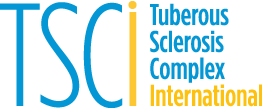| PROCEDURE | FOR NEWLY DIAGNOSED OR SUSPECTED TSC |
FOR INDIVIDUALS ALREADY DIAGNOSED WITH TSC |
|---|---|---|
| BRAIN | ||
| Brain MRI with and without gadolinium | Yes | Every 1-3 years up to age 25; periodically as adults if SEGAs present in childhood |
| Electroencephalogram (EEG) | Yes; if abnormal, follow-up with 24-hour video EEG | Routine EEG determined by clinical need; video EEG when seizure occurrence is unclear or when unexplained behavioral or neurological changes occur |
| TAND checklist | Yes | At least annually at each clinical visit |
| Comprehensive evaluation for TAND | If warranted by TAND checklist analysis | At key development time points (years): 0-3, 3-6, 6-9, 12-16, 28-35, and as needed thereafter |
| Counsel parents of infants | Educate parents to recognize infantile spasms* | Not applicable |
| SKIN, EYES, TEETH | ||
| Complete eye exam with dilated fundoscopy | Yes | Annually if lesions or symptoms identified at baseline |
| Detailed skin exam | Yes | Annually |
| Detailed dental exam | Yes | Every 6 months |
| Panoramic radiographs of teeth | If age 7 or older | At age 7 if not done previously |
| HEART | ||
| Fetal echocardiography | only if rhabdomyomas identified by prenatal ultrasound | Not applicable |
| Echocardiogram | Yes in children, especially if younger than 3 years | Every 1-3 years if rhabdomyoma present in asymptomatic children; more frequently in symptomatic individuals |
| Electrocardiogram (ECG/EKG) | Yes | Every 3-5 years; more frequently if symptomatic |
| KIDNEYS | ||
| Blood pressure | Yes | Annually |
| Abdominal MRI | Yes | Every 1-3 years |
| Glomerular filtration rate (GFR) test | Yes | Annually |
| LUNGS | ||
| Clinical screening for LAM symptoms** | Yes | At each clinic visit |
| Pulmonary function test and 6-minute walk test | In all females age 18 or older; in adult males only if symptomatic | Annually if lung cysts detected by high resolution computed tomography (HCRT) |
| High resolution computed tomography (HCRT) of chest | Yes | Every 2-3 years if lung cysts detected on HRCT; otherwise every 5-10 years |
| Counsel on risks of smoking and estrogen use | In adolescent and adult females | At each clinic visit for individuals at risk of LAM |
| GENETICS | ||
| Genetics consultation | Obtain 3-generation family history | Offer genetic testing of TSC1/2 and counseling if not done previously in individuals of reproductive age |
| *Treat infantile spasms with vigabatrin as first-line therapy. Adrenocorticotropic hormone (ACTH) can be used as a second-line therapy if vigabatrin treatment is unsuccessful.
**Evaluate for LAM when symptoms such as unexplained chronic cough, chest pain, or breathing difficulties are present including exertional dyspnea and shortness of breath. |
||
A Worldwide Organization of Tuberous Sclerosis Complex Associations
